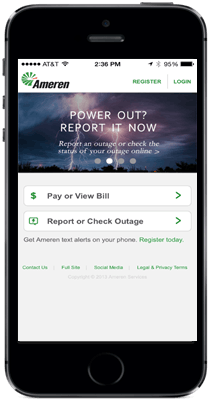Utilities want their customers to be happy in the knowledge that power is going to be there for them when they need it, and that they’ll be kept up-to-date when interruptions occur. It’s a simple fact that our customers often take us for granted while the lights are on. It’s not only us; they also take air and water for granted until it becomes polluted or in short supply. For this reason, we need to understand that the biggest driver of customer satisfaction in any business is how a business reacts and how the business works with the customer when the inevitable hiccups occur. We need to understand that during power interruptions we have transitioned from being unobserved to taking center stage.
When making our case to customers, regulators, and boards of consumer owned utilities, our first instinct is often to put numbers on our performance. The standard reliability indices defined in IEEE 1366 are being used to do that. SAIDI and her popular sisters, SAIFI and CAIDI, are calculated, trended, and displayed in all their glory using charts, graphs, and fancy dashboards. From our perspective, what’s more comforting than steadily improving percentages? What do we need to say that a line or bar graph can’t show?
According to the annual benchmarking study conducted by the IEEE Distribution Reliability Working Group, the average customer of the least reliable utility experienced 99.65% reliability in 2013. If you take out major events, they experienced 99.92% reliability. Average customers of the median utility experienced 99.96% reliability including major events. In 2012, the year of Super storm Sandy and a number of devastating tornadoes, average customers of the least reliable utility surveyed still experienced 98.8% reliability. In 2012, the average customer of the median utility experienced 99.95% reliability including major events. And yet, some surveys indicate utility customer satisfaction is in decline.
I maintain that our obsession with reliability indices diverts our attention from the bigger picture. Shouldn’t we recognize that our real goal is actually customer satisfaction: something these “sisters” do not necessarily measure?
Improving Customer Satisfaction
What can we do to meet customer expectations and, maybe more importantly, manage those expectations?
Customers don’t care as much about whether the interruption of their power lasts for one hour or three hours; their biggest concern is that they know whether it is going to be a one-hour or a three-hour (or longer) interruption. They need to know if their production facility or their store will be back up soon, or if they should send workers home or redeploy workers and initiate their Plan B. They need to know if they will be able to cook supper or if they are going to have to spend the night at grandma’s house. Industry best practices and tools exist today that allow utilities to provide timely and accurate information to their customers during power interruptions. Additionally, utilities can educate their customers and help them develop a backup plan to help cope with interruptions when they occur. It is also not unreasonable to expect the customer to take some responsibility for educating themselves on how to mitigate the effects power interruptions.
(See the sidebar article describing Ameren’s customer information programs.)
That’s not to say that studying and analyzing our own performance isn’t important. However, it’s important to use metrics that are meaningful to customers and accurately reflect their experience.
SAIDI's Underappreciated Sisters
Let’s say a group of customers who regularly experience an unacceptable number of interruptions each year approach their utility and complain. The utility responds to them and their regulators with something like, “Why do you complain? Our system SAIDI has been improved by 4.1354% over the last five years!” We all know how much that will satisfy them.
It’s like the statistician who drowned while attempting to walk across a lake with an average depth of three feet.
Most customers will tolerate a few interruptions if they are of short duration. However, the definitions of “few” and “short duration” vary between customers. For this reason, IEEE 1366 defines two additional indices: CEMI (Customers Experiencing Multiple Interruptions) and CELID (Customers Experiencing Long Interruption Duration). The function of these indices is to provide a more customer-oriented view of performance, both on a daily basis and during major events.
CEMI5 measures the percentage of customers experiencing five or more sustained interruptions in a 12-month period. CELID3 measures the percentage of customers experiencing one or more interruptions of three hours or more in a 12-month period. These indices can be especially valuable to the reliability engineer who is attempting to identify worst performing circuits. If a given utility feels that their customers’ tolerance is higher or lower than five interruptions and/or three hours, they can calculate these indices accordingly.
Why do we need these metrics? To put it simply, we want to identify the projects that will most improve customer satisfaction for the least number of dollars. To do this, we need to bring two new sisters to the party — CEMI and CELID. A metric like SAIDI that includes customers who did not experience any interruptions (in other words, those who did not even notice us) is tainted. These two new indices reflect how well we are doing managing frequency and duration of interruptions for the customers who watch us on center stage.
The IEEE Distribution Reliability Working Group recently published P1782™/D5 Guide for Collecting, Categorizing and Utilization of Information Related to Electric Power Distribution Interruption Events. It is an excellent resource for best practices analyzing reliability data and making the business case for reliability improvements.
Value vs. Cost
Some may say that the size of the monthly bill is the key driver of customer satisfaction. I would suggest that most customers actually consider value more than they do cost. Again, utilities have the ability to manage customer expectations and comparative value. For instance, in the case of residential customers, I suspect that most spend more per month on cable television or cell phone service than they do on electricity. I also suspect they experience more dropped calls than they do power interruptions. For commercial and industrial customers, many utilities have successful programs of communication and collaboration to help them realize maximum value from their investment in electricity and to keep them well informed during power interruptions. When we provide these values, cost becomes less of an issue. Some utilities use a value-based metric that tracks the accuracy of estimated times of restoral that were provided.
A Walk in Their Shoes
We can't lose sight of our customers’ perspective; unlike us, they care very little about electricity. What they really value is heat in the winter, cooling in the summer, motors that run smoothly, and a television that runs seamlessly during the Super Bowl. For them, electricity is simply a means to an end.
The utility industry needs to continue efforts to improve the aging infrastructure we are currently managing. But SAIDI, SAIFI, and CAIDI only go so far in helping us create the business case for reliability improvement projects. CEMI and CELID will help us target the areas where the most unsatisfied customers are located and where our money is most effectively spent.
No matter how much we may be able to increase the number of customers who take us for granted, we will never cost-effectively provide 100% reliability. We still need to make sure we do the best we can in keeping the interrupted customers informed so they can adjust appropriately.
Rest of article: Ameren's response...
J. David Lankutis, P.E, has 43 years of diverse experience in the electric utility industry. He has worked as an employee of and consultant to investor-owned, cooperative and municipal utilities in the United States and overseas. He has extensive experience managing major outage events. He has specified, installed and commissioned Outage Management Systems (OMS) and used the data collected to make the business case for reliability improvements. He has coordinated numerous industry seminars on outage management and reliability engineering. He is currently a Senior Project Manager for POWER Engineers. He can be contacted at: [email protected]
Sidebar: Tornadoes Shine Light on Ameren's Customer Communications
Ameren Missouri crews are known for their stellar performance during storm restoration. Our customers and our industry recognize this. What we learned during devastating tornadoes in May 2013 is that our communications efforts didn’t share that spotlight. Until then, our approach was often reactive. We didn’t prepare customers for what was to come, including accurately telling them how long their power would be out. That has changed.
In the aftermath of the tornadoes, we recognized that customers wanted more information. We turned to social media, showing them exactly what it takes to restore power after tornadoes destroyed nine substations, countless miles of wires and hundreds of poles. We began the education process with pictures and videos, letting them know why restoration was taking longer than expected, and that we understood their frustrations. We invited news crews along every step of the way. After the five day outage, we found our customers were still positive and supportive.Now, we begin our communications long before a storm reaches our front door with information via social and traditional media about staying safe. Messages like storm kit preparation or what to do around downed tree limbs and power lines resonate with customers. It shows we care. Using Quantum Weather™ we are able to position our crews ahead of the storm in areas that experts predict will be hardest hit. Video on the evening news showing a fleet of Ameren Missouri trucks getting into position tells a compelling story of how we’re preparing to serve our customers.
In addition, we’ve added a variety of options so that our customers can access the information they want on demand. Our website is mobile-enhanced and available via an app to make it faster and easier for customers to not only manage their day-to-day account activities, but also report and monitor an outage with just a few clicks on their smart phones. Customers can sign up for customized alerts at Ameren.com/Alerts to receive updates on account activities and reported outages. Starting in 2015, we’ll begin offering three new alerts to give customers even more options.
A critical part of communicating during and after a storm is accurate estimated restoration times (ERT). Ameren Missouri is executing on a strategy to ensure we set realistic expectations for our customers when we provide them an ERT after an outage. We understand that window of time we quote for when power will be restored greatly impacts how they respond to the outage, and ultimately perceive our company.
At Ameren Missouri, we believe in putting customers first in everything we do. In an outage that means not only restoring power quickly and safely, but also making sure we provide our customers with accurate information how and when they want it.
TARA OGLESBY
Assistant Vice President, Customer Experience
Ameren Missouri
About the Author
J. David Lankutis
Senior Project Manager
J. David Lankutis, P.E, has 43 years of diverse experience in the electric utility industry. He has worked as an employee of and consultant to investor-owned, cooperative and municipal utilities in the United States and overseas. He is currently a Senior Project Manager for POWER Engineers, specializing in Electric Distribution Planning, Asset Management, Outage Management and Reliability Engineering. He is a Registered Professional Engineer.

